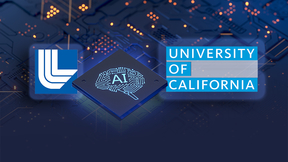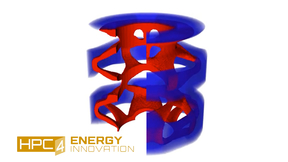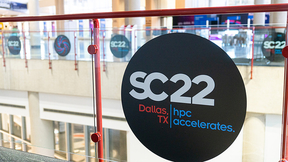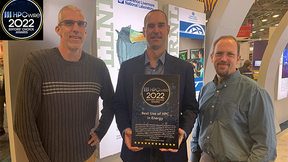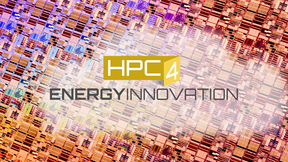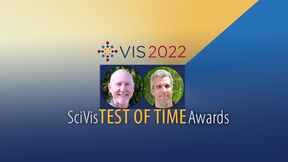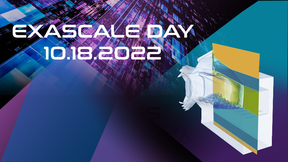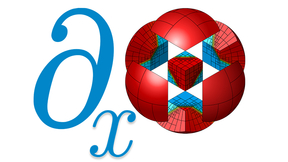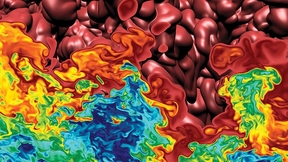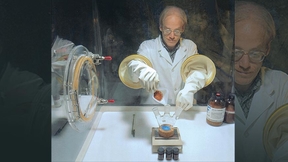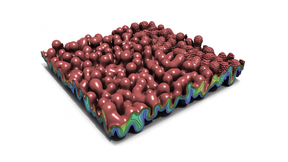Back
ASC
LLNL’s Doerfert named Better Scientific Software fellow
Lawrence Livermore National Laboratory (LLNL) computer scientist Johannes Doerfert was recently named one of the 2023 Better Scientific Software (BSSw) fellows, a government-funded program providing recognition and funding to leaders and advocates of high-quality scientific software. A member of LLNL’s Center for Applied Scientific Computing, Doerfert was one of six…
Skywing: Open-source software aids collaborative autonomy applications
A new software developed at Lawrence Livermore National Laboratory (LLNL), and known as Skywing, provides domain scientists working to protect the nation’s critical infrastructure with a high-reliability, real-time software platform for collaborative autonomy applications. The U.S. modern critical infrastructure — from the electrical grid that sends power to homes to the…
Lawrence Livermore National Laboratory ‘2022 Year in Review’
Ending with one of the most significant achievements in scientific history, 2022 will be remembered as an important year for Lawrence Livermore National Laboratory (LLNL). On Dec. 5, in the Lab’s 50th year of laser programs, LLNL’s National Ignition Facility (NIF) achieved fusion ignition for the first time in a laboratory setting: a reaction that produced more energy than…
Four Livermore researchers honored as Oppenheimer Science and Energy Leadership Program fellows
The Oppenheimer Science and Energy Leadership Program (OSELP) has selected four Lawrence Livermore National Laboratory (LLNL) scientists as 2023 fellows. Computational physicist Teresa Bailey, physicist Brent Blue, nuclear and mechanical engineer Lance Kim and chemical engineer Elizabeth Wheeler were inducted into the fellowship program. OSELP brings together exceptional…
LLNL, University of California initiative fosters academic partnership
A new joint initiative between the Lawrence Livermore National Laboratory (LLNL) Weapons and Complex Integration (WCI) Directorate and the University of California (UC) is aimed at developing next generation academic leadership with strong and enduring national laboratory connections. The LLNL Early Career UC Faculty Initiative is accepting proposals from untenured, tenure…
New HPC4EI project to create 'digital twin' models for aerospace manufacturing
A partnership involving Lawrence Livermore National Laboratory aimed at developing “digital twins” for producing aerospace components is one of six new projects funded under the HPC for Energy Innovation (HPC4EI) initiative, the Department of Energy’s (DOE) Office of Energy Efficiency and Renewable Energy (EERE) announced today. Sponsored by the HPC4Manufacturing (HPC4Mfg)…
LLNL’s de Supinski named 2022 ACM fellow
The Association for Computing Machinery (ACM) has named Lawrence Livermore National Laboratory’s Chief Technology Officer for Livermore Computing (LC) Bronis R. de Supinski as a 2022 ACM fellow, recognizing him for his contributions to the design of large-scale systems and their programming systems and software. The prestigious ACM fellows program honors the top 1% of ACM…
LLNL staff returns to Texas-sized Supercomputing Conference
The 2022 International Conference for High Performance Computing, Networking, Storage, and Analysis (SC22) returned to Dallas as a large contingent of Lawrence Livermore National Laboratory (LLNL) staff participated in sessions, panels, paper presentations and workshops centered around high performance computing (HPC). The world’s largest conference of its kind celebrated…
LLNL researchers win HPCwire award for applying cognitive simulation to inertial confinement fusion
The high performance computing publication HPCwire announced Lawrence Livermore National Laboratory (LLNL) as the winner of its Editor’s Choice award for Best Use of HPC in Energy for applying cognitive simulation (CogSim) methods to inertial confinement fusion (ICF) research. The award was presented Tuesday at the largest supercomputing conference in the world: the 2022…
LLNL physicist probes causes of life-shortening 'dwell fatigue' in titanium
"Dwell fatigue" is a phenomenon that can occur in titanium alloys when held under stress, such as a jet engine's fan disc during takeoff. This peculiar failure mode can initiate microscopic cracks that drastically reduce a component's lifetime. The most widely used titanium alloy, Ti-6Al-4V, was not believed to exhibit dwell fatigue before the 2017 Air France Flight 066…
LLNL’s SUNDIALS team wins prestigious SIAM/ACM Prize
The Society for Industrial and Applied Mathematics (SIAM) and Association for Computing Machinery (ACM) announced that they have awarded the 2023 SIAM/ACM Prize in Computational Science and Engineering to the team behind the Lawrence Livermore National Laboratory (LLNL)-developed SUNDIALS software suite. The prestigious award is handed out every two years and recognizes…
HPC4EnergyInnovation initiative opens fall 2022 solicitation
The High-Performance Computing for Energy Innovation (HPC4EI) initiative has opened its fall 2022 solicitation cycle to industry partners interested in collaborating with the Department of Energy (DOE) to address key energy and decarbonization-related challenges. The sponsors of this solicitation are the HPC4Manufacturing (HPC4Mfg) and HPC4Materials (HPC4Mtls) programs,…
Two LLNL-led papers win Test of Time awards at 2022 IEEE VIS conference
Two Lawrence Livermore National Laboratory-led teams received SciVis Test of Time awards at the 2022 IEEE VIS conference on Oct. 18, for papers that have achieved lasting relevancy in the field of scientific visualization. Published in 2008, an LLNL-led paper that — for the first time — allowed Digital Morse Theory to be applied to large scale and three-dimensional data,…
Project co-led at LLNL looks to improve visualization of largescale datasets
Lawrence Livermore National Laboratory researchers are starting work on a three-year project aimed at improving methods for visual analysis of large heterogeneous data sets as part of a recent Department of Energy funding opportunity. The joint project, titled “Neural Field Processing for Visual Analysis,” will be led at LLNL by co-principal investigator (PI) Andrew…
LLNL scientists eagerly anticipate El Capitan’s potential impact
While Lawrence Livermore National Laboratory is eagerly awaiting the arrival of its first exascale-class supercomputer, El Capitan, physicists and computer scientists running scientific applications on testbeds for the machine are getting a taste of what to expect. “I'm not exactly sure we’ve wrapped our head around exactly about how much compute power [El Capitan] is…
DOE funds LLNL project to improve differentiation of extreme-scale science applications
A high performance computing (HPC) project led by Lawrence Livermore National Laboratory researchers was one of 22 recently awarded funding by the Department of Energy (DOE) under the 2022 “Exploratory Research for Extreme-Scale Science” (EXPRESS) program. LLNL computational mathematician Tzanio Kolev will serve as principal investigator on the project, which includes LLNL…
The people of stockpile stewardship are the key to LLNL’s success
The last nuclear test, code-named Divider, took place 30 years ago, on Sept. 23, 1992. That year, President Bush declared a temporary moratorium on nuclear testing, which became permanent during the Clinton administration. This ending of the era of nuclear testing was also the beginning of stockpile stewardship. Leaders from the Department of Energy (DOE), and Lawrence…
Scientific discovery for stockpile stewardship
Scientific discovery during the Stockpile Stewardship Program maintains confidence in the nuclear deterrent without testing, brings other benefits The last nuclear test, code-named Divider, took place 30 years ago, on September 23, 1992. That year, President Bush declared a temporary moratorium on nuclear testing, which became permanent during the Clinton administration…
Developing technology to keep the nuclear stockpile safe, secure and reliable
The last nuclear test, code-named Divider, took place 30 years ago, on Sept. 23, 1992. That year, President Bush declared a temporary moratorium on nuclear testing, which became permanent in 1995, during the Clinton administration. This ending of the era of nuclear testing coincided with a Presidential announcement of the beginning of stockpile stewardship. As the decision…
LLNL to cooperate with University of Utah's oneAPI Center of Excellence
The University of Utah has announced the creation of a new oneAPI Center of Excellence focused on developing portable, scalable and performant data compression techniques. The oneAPI Center will be headed out of the University of Utah’s Center for Extreme Data Management Analysis and Visualization (CEDMAV) and will involve the cooperation of Lawrence Livermore National…






